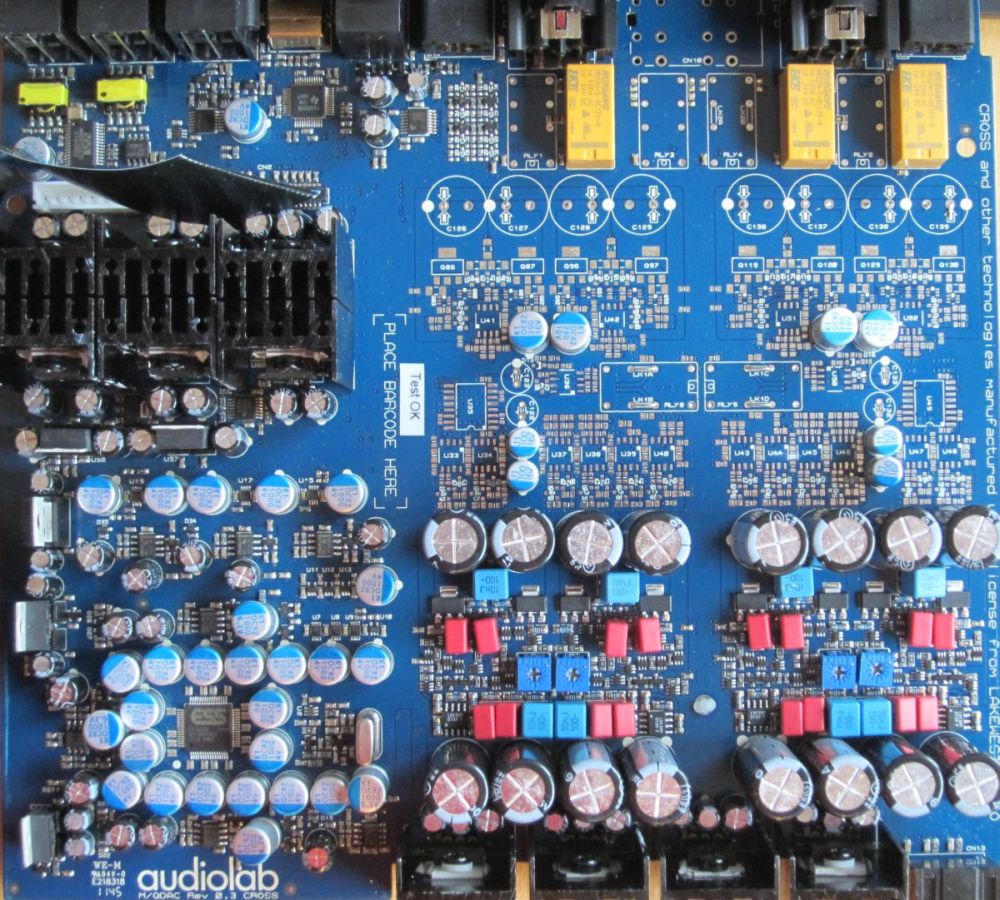MD ACV: Your Comprehensive Apple Cider Vinegar Handbook

Randi
2024-04-02 11:05
58
0
본문
Introduction
Multidrug-resistant Acinetobacter baumannii complex (MDACV) is a growing concern in healthcare settings due to its ability to evade antibiotics and cause serious infections. In order to effectively combat this threat, it is crucial to understand the ingredients that make up MDACV and how they contribute to its resistance mechanisms. This report will provide a detailed overview of the key ingredients in MDACV, their functions, and their role in antibiotic resistance.
Key Ingredients in MDACV
1. Outer Membrane Proteins (OMPs)
Outer membrane proteins (OMPs) play a crucial role in the structure and function of the outer membrane of Acinetobacter baumannii. These proteins are involved in various functions, including nutrient uptake, cell signaling, and protection against environmental stressors. In MDACV, certain OMPs have been shown to play a role in antibiotic resistance by serving as efflux pumps for antibiotics, preventing them from entering the bacterial cell.
2. Efflux Pumps
Efflux pumps are specialized proteins that transport antibiotics out of bacterial cells, reducing their effectiveness. In MDACV, efflux pumps are upregulated in response to antibiotic exposure, allowing the bacteria to expel antibiotics and maintain their survival. Efflux pumps have been identified as a key mechanism of antibiotic resistance in MDACV, making them a major target for drug development efforts.
3. Beta-Lactamases
Beta-lactamases are enzymes produced by bacteria that confer resistance to beta-lactam antibiotics, such as penicillins and cephalosporins. In MDACV, beta-lactamases are highly diverse and play a significant role in antibiotic resistance. These enzymes are capable of hydrolyzing beta-lactam antibiotics, rendering them ineffective against the bacteria. Understanding the diversity and mechanisms of beta-lactamases in MDACV is essential for developing effective treatment strategies.
4. Outer Membrane Vesicles (OMVs)
Outer membrane vesicles (OMVs) are small, spherical structures released by bacteria that contain various biomolecules, including proteins, lipids, and nucleic acids. In MDACV, OMVs have been implicated in the transfer of antibiotic resistance genes between bacterial cells, contributing to the spread of resistance. Additionally, OMVs can protect bacteria from antibiotics by acting as decoys, diverting antibiotics away from the bacterial cell.
5. Lipopolysaccharides (LPS)
Lipopolysaccharides (LPS) are large molecules found in the outer membrane of Gram-negative bacteria, such as Acinetobacter baumannii. In MDACV, changes in the structure and composition of LPS have been linked to antibiotic resistance. Alterations in LPS can reduce the permeability of the outer membrane, preventing antibiotics from entering the bacterial cell. Understanding the role of LPS in MDACV resistance mechanisms is critical for developing new treatment approaches.
6. Porins
Porins are transmembrane proteins that form channels in the outer membrane of Gram-negative bacteria, allowing for the passage of molecules, including nutrients and antibiotics. In MDACV, alterations in porin expression and function have been associated with antibiotic resistance. Changes in porin structure can reduce the influx of antibiotics into the bacterial cell, limiting their effectiveness. Targeting porins as a means of overcoming antibiotic resistance in MDACV Ingedients is an area of ongoing research.
 7. Capsular Polysaccharides
7. Capsular Polysaccharides
Capsular polysaccharides are complex carbohydrates that form a protective layer around bacterial cells, providing defense against host immune responses and antibiotics. In MDACV, capsular polysaccharides have been shown to play a role in antibiotic resistance by preventing antibiotics from reaching their target sites. Understanding the composition and structure of capsular polysaccharides in MDACV is important for developing strategies to disrupt this protective barrier.
Conclusion
In conclusion, the key ingredients in MDACV play a critical role in its antibiotic resistance mechanisms. Understanding the functions and interactions of these ingredients is essential for MDACV Ingedients developing effective treatment strategies to combat this growing threat in healthcare settings. Further research is needed to elucidate the precise mechanisms by which these ingredients contribute to antibiotic resistance in MDACV and to identify new targets for drug development. By targeting the key ingredients in MDACV, we can work towards overcoming antibiotic resistance and improving patient outcomes.
Multidrug-resistant Acinetobacter baumannii complex (MDACV) is a growing concern in healthcare settings due to its ability to evade antibiotics and cause serious infections. In order to effectively combat this threat, it is crucial to understand the ingredients that make up MDACV and how they contribute to its resistance mechanisms. This report will provide a detailed overview of the key ingredients in MDACV, their functions, and their role in antibiotic resistance.
Key Ingredients in MDACV
1. Outer Membrane Proteins (OMPs)
Outer membrane proteins (OMPs) play a crucial role in the structure and function of the outer membrane of Acinetobacter baumannii. These proteins are involved in various functions, including nutrient uptake, cell signaling, and protection against environmental stressors. In MDACV, certain OMPs have been shown to play a role in antibiotic resistance by serving as efflux pumps for antibiotics, preventing them from entering the bacterial cell.
2. Efflux Pumps
Efflux pumps are specialized proteins that transport antibiotics out of bacterial cells, reducing their effectiveness. In MDACV, efflux pumps are upregulated in response to antibiotic exposure, allowing the bacteria to expel antibiotics and maintain their survival. Efflux pumps have been identified as a key mechanism of antibiotic resistance in MDACV, making them a major target for drug development efforts.
3. Beta-Lactamases
Beta-lactamases are enzymes produced by bacteria that confer resistance to beta-lactam antibiotics, such as penicillins and cephalosporins. In MDACV, beta-lactamases are highly diverse and play a significant role in antibiotic resistance. These enzymes are capable of hydrolyzing beta-lactam antibiotics, rendering them ineffective against the bacteria. Understanding the diversity and mechanisms of beta-lactamases in MDACV is essential for developing effective treatment strategies.
4. Outer Membrane Vesicles (OMVs)
Outer membrane vesicles (OMVs) are small, spherical structures released by bacteria that contain various biomolecules, including proteins, lipids, and nucleic acids. In MDACV, OMVs have been implicated in the transfer of antibiotic resistance genes between bacterial cells, contributing to the spread of resistance. Additionally, OMVs can protect bacteria from antibiotics by acting as decoys, diverting antibiotics away from the bacterial cell.
5. Lipopolysaccharides (LPS)
Lipopolysaccharides (LPS) are large molecules found in the outer membrane of Gram-negative bacteria, such as Acinetobacter baumannii. In MDACV, changes in the structure and composition of LPS have been linked to antibiotic resistance. Alterations in LPS can reduce the permeability of the outer membrane, preventing antibiotics from entering the bacterial cell. Understanding the role of LPS in MDACV resistance mechanisms is critical for developing new treatment approaches.
6. Porins
Porins are transmembrane proteins that form channels in the outer membrane of Gram-negative bacteria, allowing for the passage of molecules, including nutrients and antibiotics. In MDACV, alterations in porin expression and function have been associated with antibiotic resistance. Changes in porin structure can reduce the influx of antibiotics into the bacterial cell, limiting their effectiveness. Targeting porins as a means of overcoming antibiotic resistance in MDACV Ingedients is an area of ongoing research.
 7. Capsular Polysaccharides
7. Capsular PolysaccharidesCapsular polysaccharides are complex carbohydrates that form a protective layer around bacterial cells, providing defense against host immune responses and antibiotics. In MDACV, capsular polysaccharides have been shown to play a role in antibiotic resistance by preventing antibiotics from reaching their target sites. Understanding the composition and structure of capsular polysaccharides in MDACV is important for developing strategies to disrupt this protective barrier.
Conclusion
In conclusion, the key ingredients in MDACV play a critical role in its antibiotic resistance mechanisms. Understanding the functions and interactions of these ingredients is essential for MDACV Ingedients developing effective treatment strategies to combat this growing threat in healthcare settings. Further research is needed to elucidate the precise mechanisms by which these ingredients contribute to antibiotic resistance in MDACV and to identify new targets for drug development. By targeting the key ingredients in MDACV, we can work towards overcoming antibiotic resistance and improving patient outcomes.


댓글목록0
댓글 포인트 안내